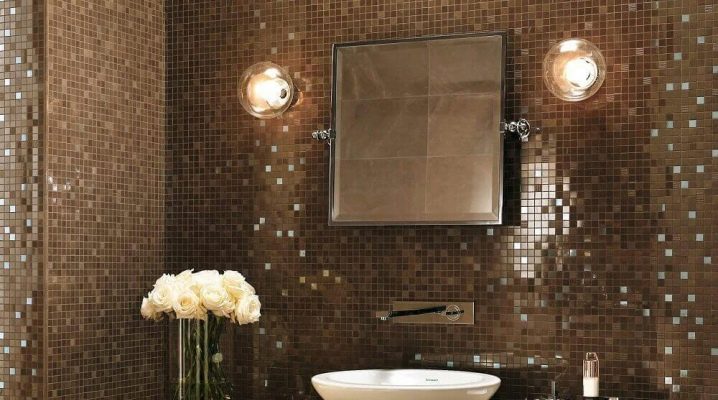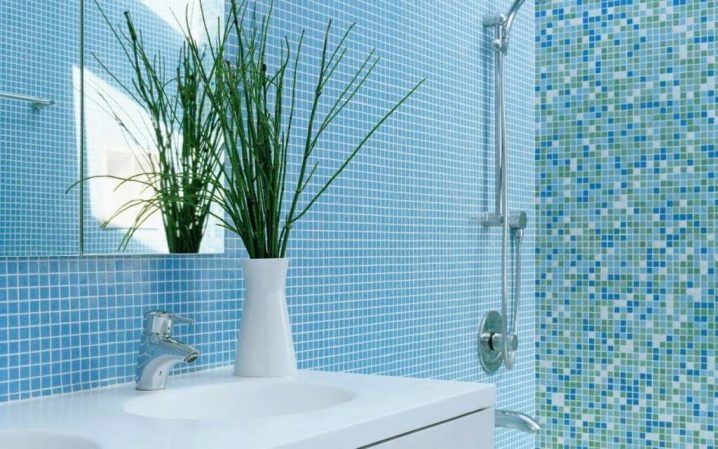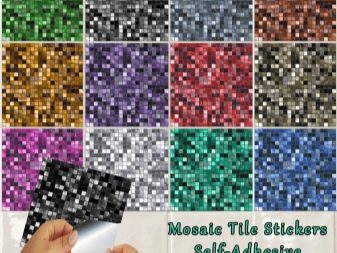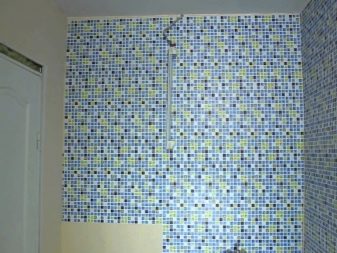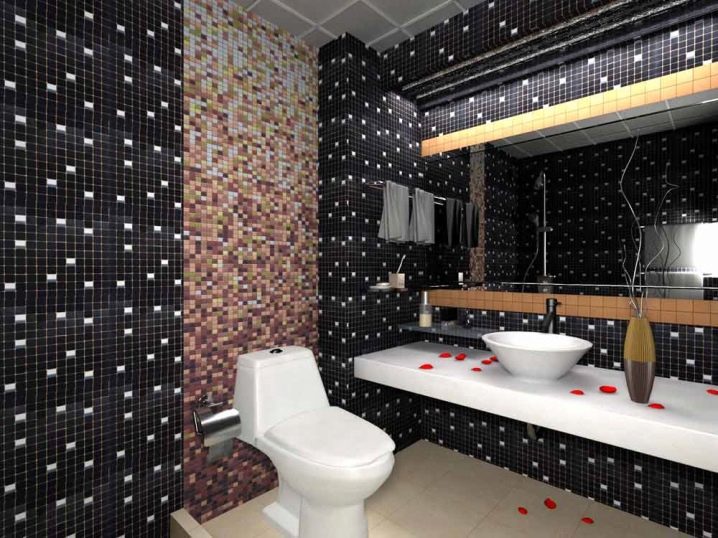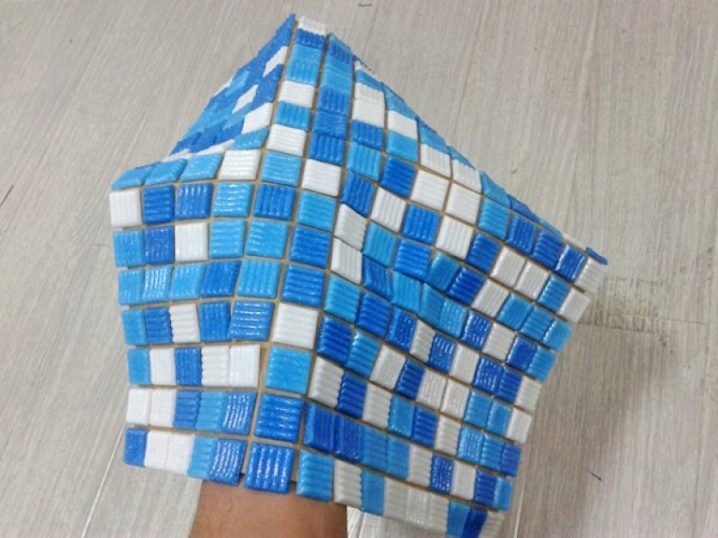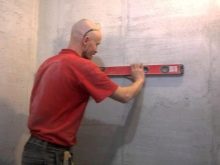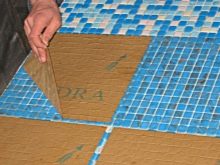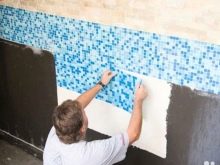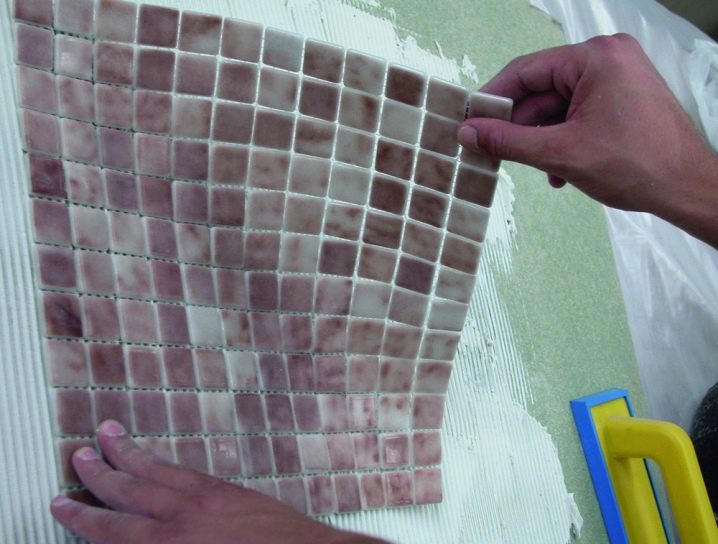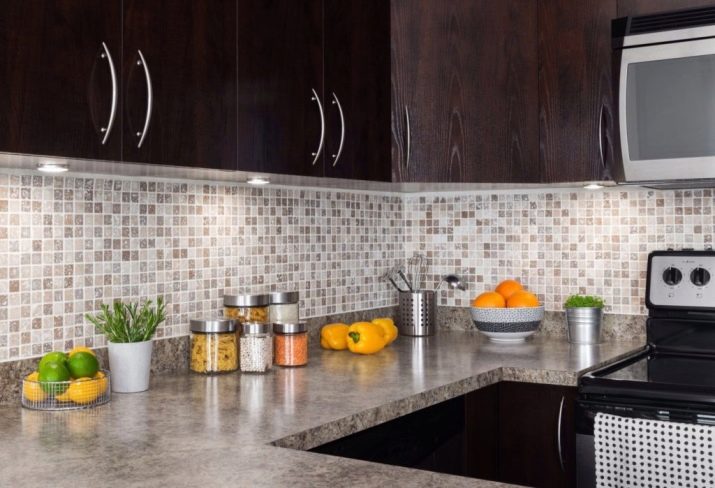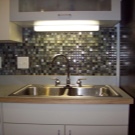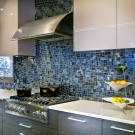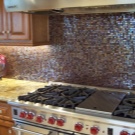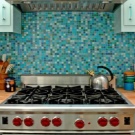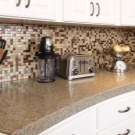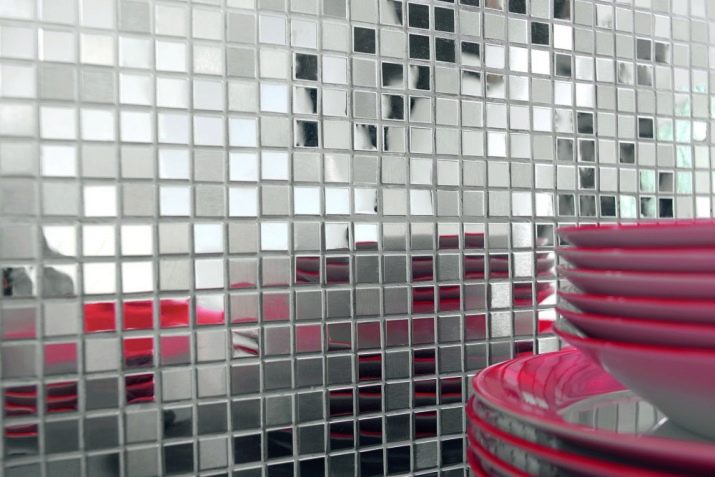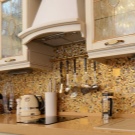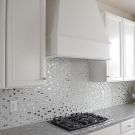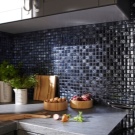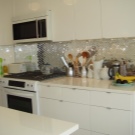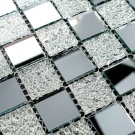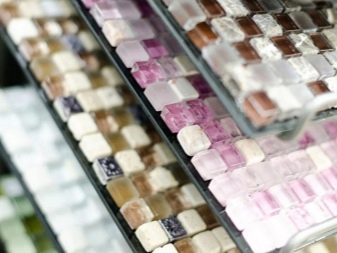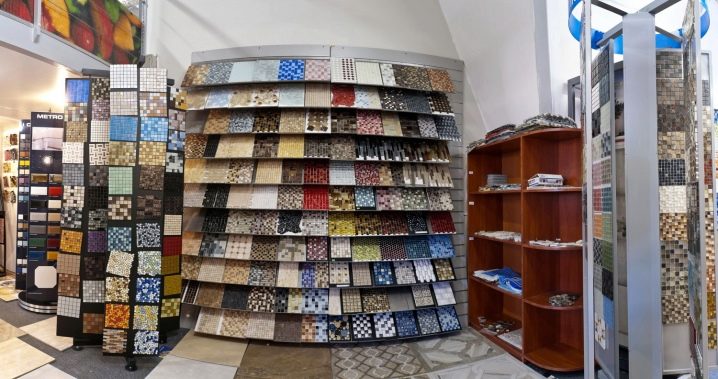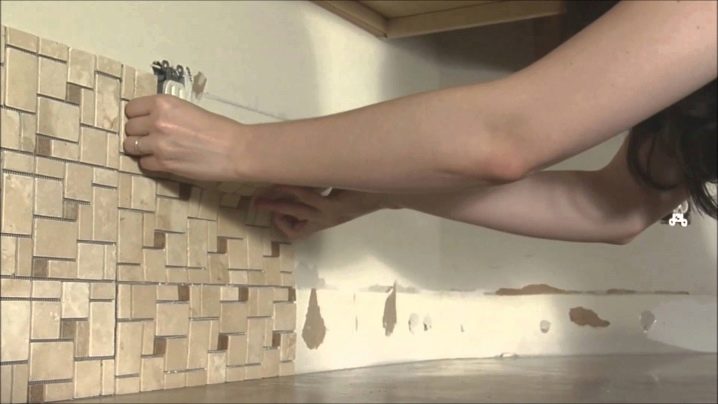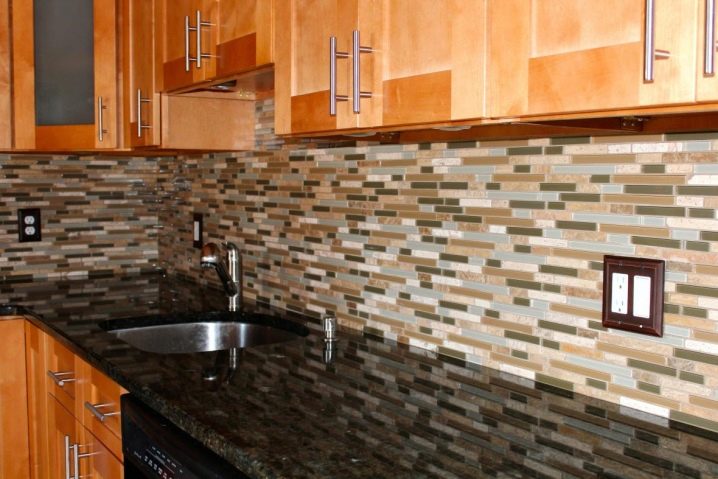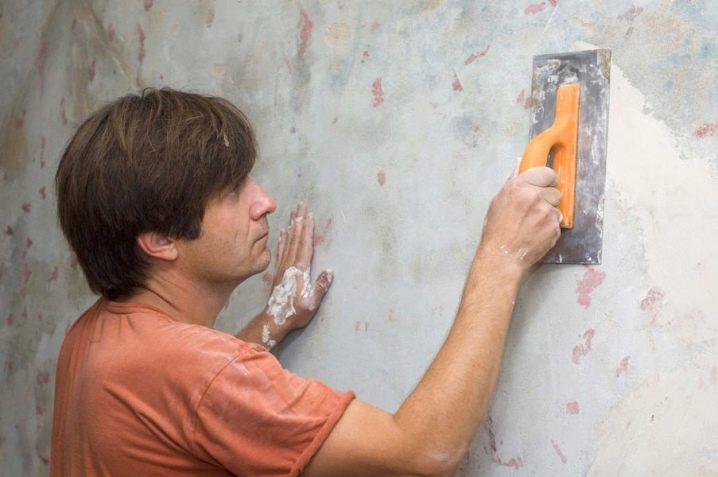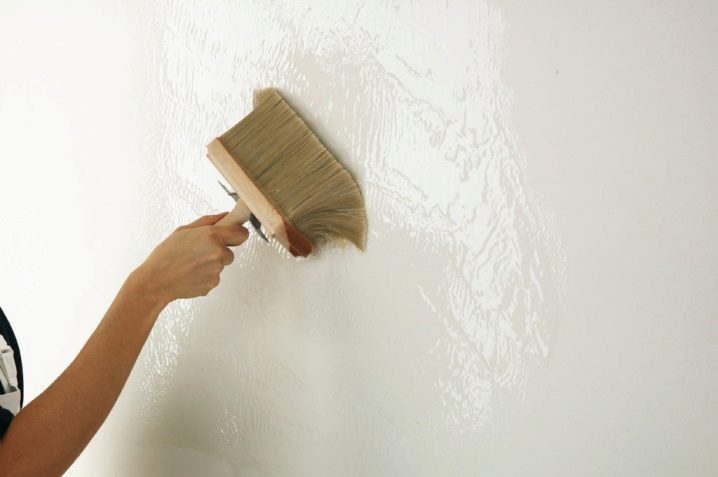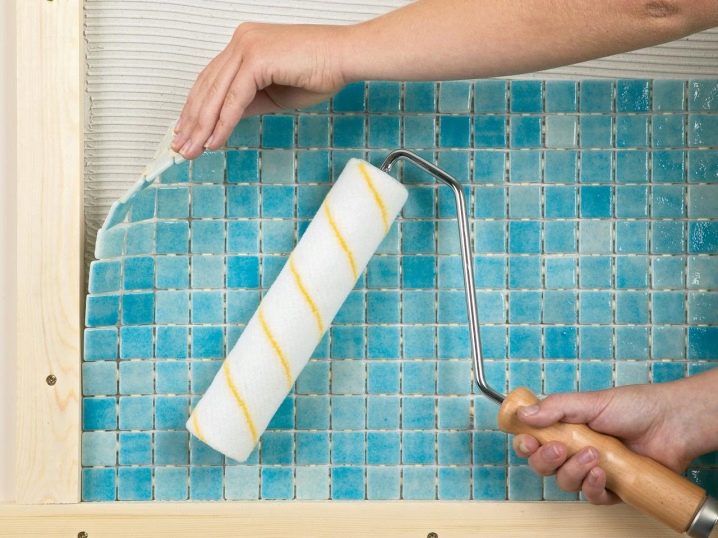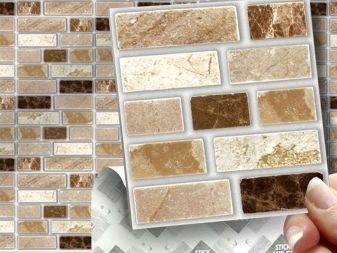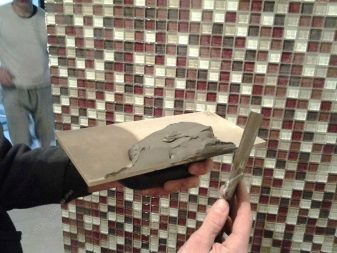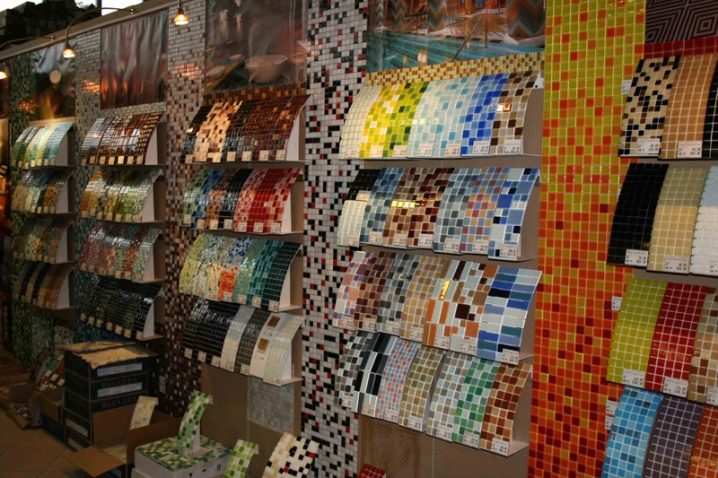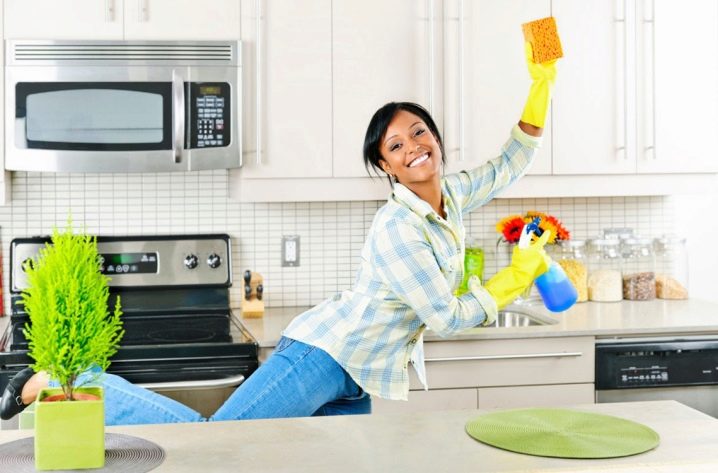Self-adhesive mosaic in the design of the walls
Today in the bathrooms and kitchens the easiest way to do creativity and implement unusual design ideas. All because you are absolutely not limited in the choice of textures, materials and styles. For the bathroom and kitchen there is a huge amount of simple and stylish solutions. Another positive point is that you can choose different color arrangements and are not limited in your fantasies, which cannot be said about other rooms. After all, bedrooms, as a rule, are made in soothing colors, children's rooms are made bright and bright. A finish bathroom, toilet and kitchen make, based on the preferences of the owners or the imagination of the designer.
Special features
It is worth noting that the positive qualities of a conventional mosaic are almost the same as those of a self-adhesive mosaic.However, there are some important differences between these finishes for rooms with high humidity. In particular, it is an opportunity to independently carry out work on the installation of mosaic tiles.
Advantages of the mosaic:
- ease of installation;
- a large number of flowers;
- variety of design options for decorative elements;
- the ability to perform work independently, which entails lower costs for interior design;
- no need to buy expensive auxiliary materials, equipment and tools;
- ease of operation;
- mosaic compositions are perfectly combined with other materials in interior design;
- high level of environmental friendliness.
In the most common version of the "self-adhesive" is produced and supplied in the form of individual tileswhich are similar in size with ceramic tiles or slightly different in size. The thickness of these tiles is about five millimeters and is a two-layer structure. The first outer layer is a polymeric coating with a specific texture, and the second is a self-adhesive very thin substrate.To attach the mosaic to the surface you need, you need to follow a simple procedure.
In the beginning, you should choose a flat surface of the wall, floor or ceiling. Then the protective layer is removed from the self-adhesive part of the plate, which is pressed down to the selected plane. After the plate is fixed on the plane, you need to remove the protective layer from the polymer part, which you will need to wipe with a damp cloth or paper. A self-adhesive substrate has a very high adhesion strength, which means that it will be very difficult to detach the pasted mosaic from the wall.
There are several fairly important rules that should be followed when finishing work. First, you need to very carefully perform gluing and choose the correct location of the mosaic tiles. But to finish the necessary surfaces is possible without the help of professionals, as this does not require the use of specialized grouting. Grout wonderfully replaces the background, which is created by self-adhesive surface. However, the use of grout of different colors is not prohibited and is quite acceptable.
For kitchen
If you want to use this technology to create a beautiful interior of your kitchen, It is necessary to consider compliance with several important factors when choosing a finishing material for the kitchen:
- sudden temperature changes and high humidity levels;
- the possibility of wet cleaning with the use of chemicals;
- the relevance of the decor.
Most of the above criteria are met by a mosaic of walls, and in some cases a ceiling and floor finish. The mirror adhesive coating is unique due to its excellent compatibility with almost any kind of decorative finish. The coating, which is intended for the interior design of the kitchen, is made of heat-resistant and waterproof materials. A huge range of shades and colors will allow the owner or designer to choose the best option for the interior, which will be combined with the other components of the room.
Kinds
The main classification is due to:
- manufacturing material;
- method of laying on the work surface;
- size range and shape of the material.
Today, the market has a huge assortment of mosaics of glass, stone, plastic, metal, ceramics and wood. True, wood is not used in the kitchen and bathroom, as it is poorly protected from water. There are a lot of variants of mosaic elements in terms of geometry, starting from the most common form of "square" and ending with a triangular or oval type of "shell". The color, size and shape of the mosaic parts are very important to consider when planning a panel with a given pattern or ornament.
The sequence of work during installation
Separate chips and mosaic plates are placed on a combined basis in the form of a grid and do not require a perfectly flat surface, and curved parts of the surface can help in creating unusual forms in the interior. But since the mosaic is self-adhesive, it is necessary to level the work surface more thoroughly. All this is necessary so that in future there will be no detachment of some parts and changes in the original shape of the finishing material.
This will require some tool and some patience. The necessary tools are usually available for any owner. The degree of complexity of work depends on the initial state of the working surface.Previously, quite often for the decoration of the "apron" in kitchens used tiles. It should be noted that in the arsenal of modern manufacturers there are modifications of tiles that mimic the mosaic coating. At a price, they are often lower than self-adhesive mosaic, but such coverage looks less presentable.
To get started is to dismantle the old ceramics, wallpaper or paint along with the remnants of frozen mounting materials. Of course, there may be difficulties in treating surfaces decorated with oil paints or enamel. To cope with this process, you can perform special notches with a perforator or a hammer with a chisel, which should raise the layer of plaster and be located at a small distance from each other.
Then the work surface must be treated with an acrylic or latex primer of deep penetration. When the primer is dry, apply a leveling layer of plaster on the plane of the wall or ceiling. For this purpose, perfect plaster plaster. It is quite plastic, has a high level of adhesion and does not require additional putty, and most importantly, it is sold at reasonable prices.
To continue work, you must wait until the mixture is completely dry. This process can take from one to two days, it all depends on the thickness of the applied material. Then the prepared surface is polished with a special net or fine sandpaper. Next, a layer of finishing primer is applied, which finally prepares the surface for further finishing. It interconnects the molecules of the substance on the surface and improves the adhesion of the wall surface with self-adhesive tiles. And, of course, it is necessary to give the primer how to dry out, so that it fully performs all its functions and declared characteristics.
All the above operations with a certain degree of effort and diligence can be performed independently. Spent time is more than offset by the price of wage labor. If you are not confident in your abilities, it is better to seek help from specialists.
The main work on sticking mosaic begins with drawing on the previously prepared surface markings. Before installing the mosaic, you must ensure that the markup is correct and that it meets its technical requirements. According to the marking, the first row of mosaic tiles is glued.To circumvent the protrusions that create the inner and outer corners, it is enough to cut the base of the element. For this procedure, perfect stationery knife.
The self-adhesive backing of the decorative mosaic is covered with a special protective film, which must be removed immediately before installation. Installation of elements on the wall must be accurate and verified. The mosaic element after fixation on the surface will be impossible to fix without damaging the segments. Closing the seams between the elements is optional. The base, made in white or black, creates the necessary contrast of colors and looks quite aesthetic.
How to choose?
One of the most important criteria for choosing a material is its price.
It is necessary to highlight a number of factors that affect the pricing of the mosaic:
- the country in which the material is produced;
- brand popularity;
- the degree of complexity of the decor;
- production material;
- the number of items used.
It should be understood that the product from natural material will have a higher price than the same product, but made from artificial.Also strongly influenced by the price of the desire of people to buy most of the imported goods, which are much higher in price, in contrast to domestic or Chinese products. Products of world famous brands are the most expensive.
Care
It is difficult to find a more suitable type of finish that would be as easy to use as a self-adhesive mosaic. It conceals contaminants well in the form of splashes of grease, oil, juice and soap suds, is also perfectly washed with liquid detergents and maintains an excellent appearance for a long time. And if it happened that one of the elements was damaged, it is possible to replace it without violating the integrity of the entire composition. This significantly saves money on repairs and time. But in order to purchase identical coverage did not cause difficulties, you should purchase a mosaic with a stock of 10-15% when purchasing materials for repairs. This step will be evaluated in case of forced replacement of items.
You can watch a master class on mounting a self-adhesive mosaic on a wall in this video.
